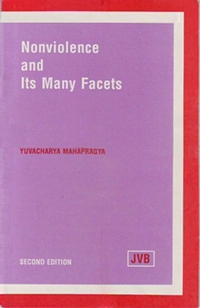
As social beings all humans like non-violence since it guarantees peace which in turn is a prerequisite for happiness. The roots of violence are deep and extensive and therefore to destroy them is very difficult. However, it is not impossible. The best way to do it is meditation. Before discovering the relation between meditation and non-violence it is necessary to find out the root cause of violence, as also the factors which provide sustenance to violence.

One of the most important factors is stress. Violence is not possible in the absence of stress. A relaxed person cannot commit violence. The muscles get tense, the mind becomes tense and the feelings turn tense too. Violence is the natural outcome. Basically, of course most tension is born of an agitated mind. There are two types of stress: that which is born of a sense of arrogance and that born of a sense of defeat. To the former belong cases of stress arising out of anger and greed; to the latter those caused by despair, defeat and indolence. Whatever the provenance, all types of tensions generate violence. A hurt ego can spell disaster, so can the passions of anger and greed. Similarly, desperation and defeat can also result in violence, as is the case with most suicides.
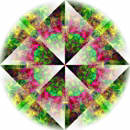
Against the backdrop of tension or stress, it becomes meaningful to talk about meditation and non-violence. As noted above, the most potent antidote to stress of all kinds is meditation. In fact the main aim of meditation is to free man from stress. Kayotsarg (abandonment of the body, a motionless posture of meditation) and anupreksha or contemplation (reflection) are both a part of meditation. The former quickly relieves muscle-tension even as dirgha svasa preksha (perception of breath involving slow and complete exhalation and deep inhalation) totally removes all mental tension. There are related techniques like indriya sanyam mudra (meditational posture of controlling the senses), jyoti kendra preksha (perception of the pineal gland), anitya anupreksha (contemplation of impermanence) andekatua anupreksha (contemplation of solitariness) which cure specific types of tension. The main things being emphasized here is the efficacy of meditation as a complete cure for all varieties of stress and tension.
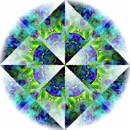
Another factor involved in violence is chemical imbalance. When there is an imbalance of glandular secretions in the body, people become violent. Every endocrine gland has its specific functions. What the pituitary gland does is different from what the pineal gland does and similarly the thyroid and the adrenal glands have their peculiar functions. A harmonious functioning of these glands keeps a man balanced. Any imbalance, in the former results in an imbalance in the latter. Meditation can restore the lost balance. Chaitanya kendra preksha (perception of the psychic centres or the endocrine system) is an effective means of curing the imbalance. Concentration on the jyoti kendra (the pineal), darshan kendra (the pituitary), vishuddhi kendra (the thyroid) and tejas kendra (the adrenals) balances the flow of the hormones of the pineal, pituitary, thyroid and the adrenal glands respectively. Such an understanding is duly backed by the findings of modern biochemistry. Since violence can be ascribed to hormonal imbalances in the body, meditation turns out to be their best therapy.
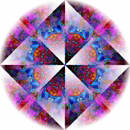
The third factor responsible for violence is an imbalance in the nadi tantra (nervous system). Occasionally we come across cases of motiveless violence. When questioned, the agents of such violence simply say that they resort to violence for no reason other than deriving joy. This type of violence is due to an imbalance in the nervous system and its cure lies in samvritti shvas preksha (exhaling breath through one nostril and inhaling through the other). It requires alternate breathing through the two nostrils - inhaling through the left and exhaling through the right nostril and then in the reverse order, and repetition of the cycle. Hath yoga recognizes two parts of the nervous system, the right being called pingla and the left ida. In the language of medical science pingla is the sympathetic nervous system. By practising samvritti shvas preksha a balance between the two systems is created. Besides, an internal trip (travel of the conscious mind from the bottom to the top of the spinal cord) also helps restore the balance. Once the three parts of the nervous system-central, sympathetic and parasympathetic-start acting in a balanced manner, violence automatically disappears.

Another way of looking at the problem is in terms of the two attitudes - positive and negative. Ordinarily man has a preponderance of the latter. Hatred, jealousy, fear and lust are all symptoms of a negative attitude and they are also the factors that contribute to violence. Racism, casteism and all other forms of discrimination generate violence due to the presence of the negative attitude. There is a need to think positively making it impossible for the mind to harbour bad feelings for others. Meditation develops positive thinking by insisting on practising perception of the self. Seeing oneself, introspection, anitya anupreksha (contemplation of impermanence) etc. are the sure means of developing positive thinking and eliminating negative thinking, the fourth factor responsible for violence.

The fifth element is being over busy or exertion-mental, vocal and physical. Being busy and exerting are undoubtedly essential for life, but there should be a limit to them. Today man has broken all limits and has become over busy- a victim of overexertion. The result again is violence. Nature ordains a balance between work and rest, both mental and physical, and between speech and silence. To stop unnecessary exertion of the body and the mind, as also of speech, is to lead a disciplined life. Observing silence just for an hour in the day will be a great boost to balanced living. Likewise, useless and unceasing thinking can prove unhinging. So once again resting the mind for an hour during the day - keeping it free from all thoughts- can prove immensely useful. Physical discipline, vocal discipline and mental discipline are intrinsic to meditation. By practising all the three of them we can severely restrain violence.

Look at the pathology of violence. Doing violence or being violent brings about a complete change in our biology. The muscles get an extra dose of blood and become tense. The adrenals give out extra secretion, which mixes with the blood and pumps in an excess of energy in the system. The liver too releases an extra of energy in the system. The liver too releases an extra quantity of sugar in the blood stream. It brings about physical, psychological and chemical reactions. With the rise of aggressiveness breathing becomes fast. The normal rate of 10 to 15 breaths a minute goes up to 30 or 40. The stage is fully set for letting loose violence. Meditation puts the brakes on the over-busyness of the body and the mind and thus prevents violence. Once the above truth is properly grasped, the way will be clear to adopt measures best calculated to put an end to crimes and violence in society. Eventually no groping will be necessary for finding the solution to the problems of nuclear armament and war.
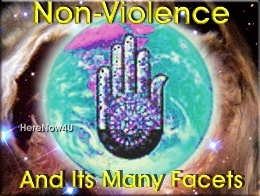
 Acharya Mahaprajna
Acharya Mahaprajna
